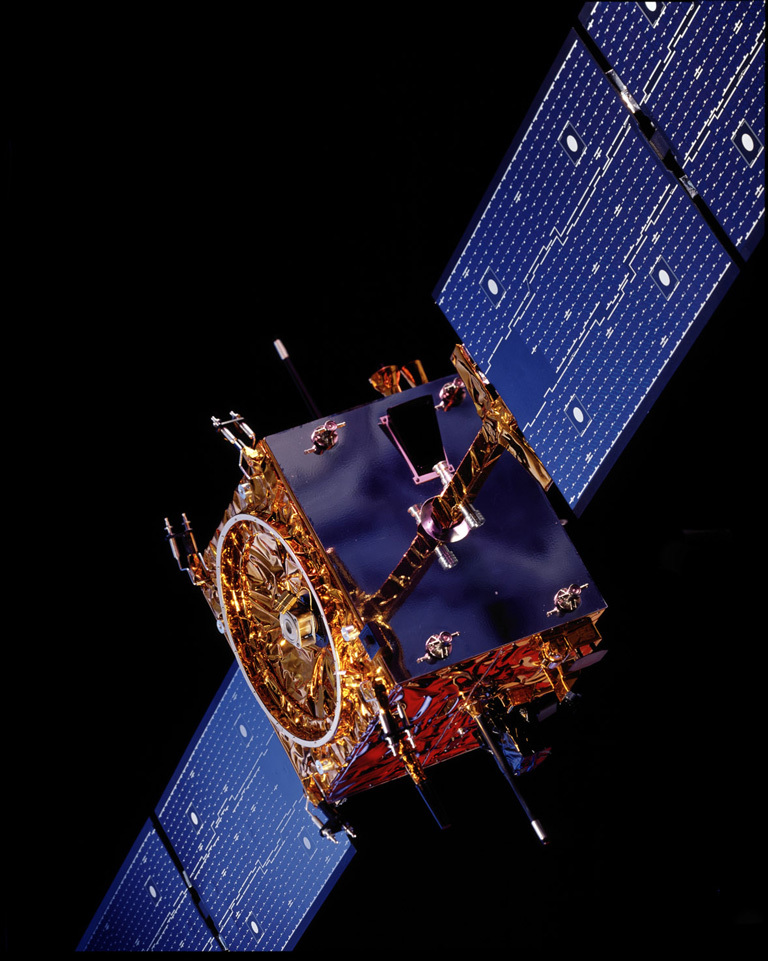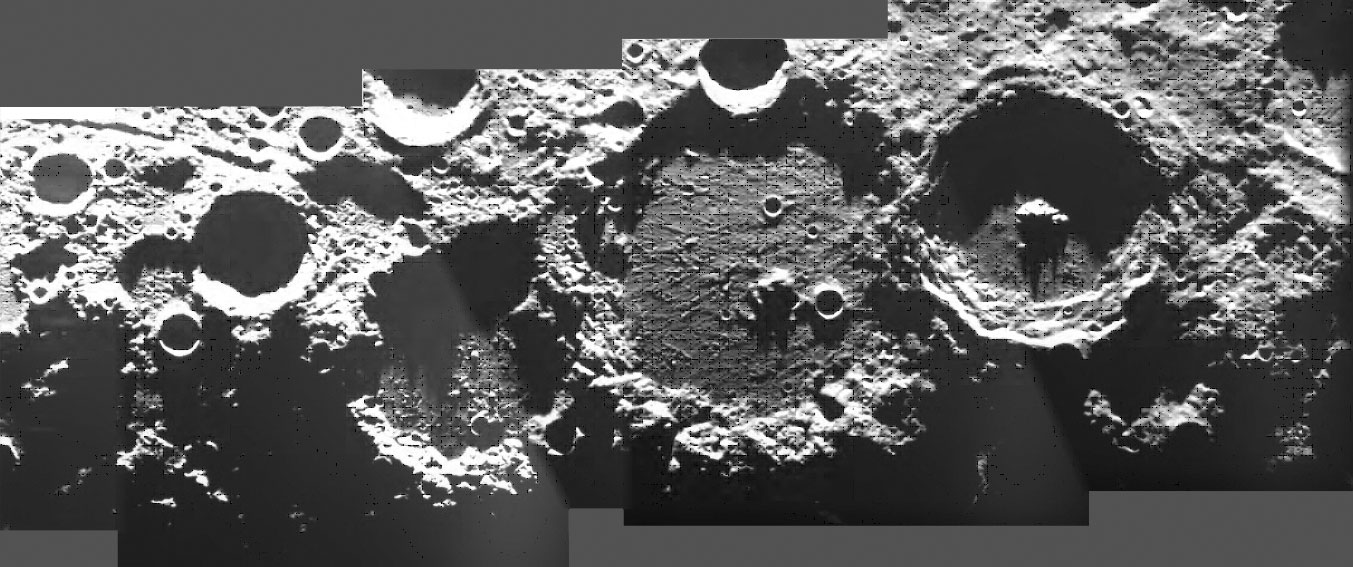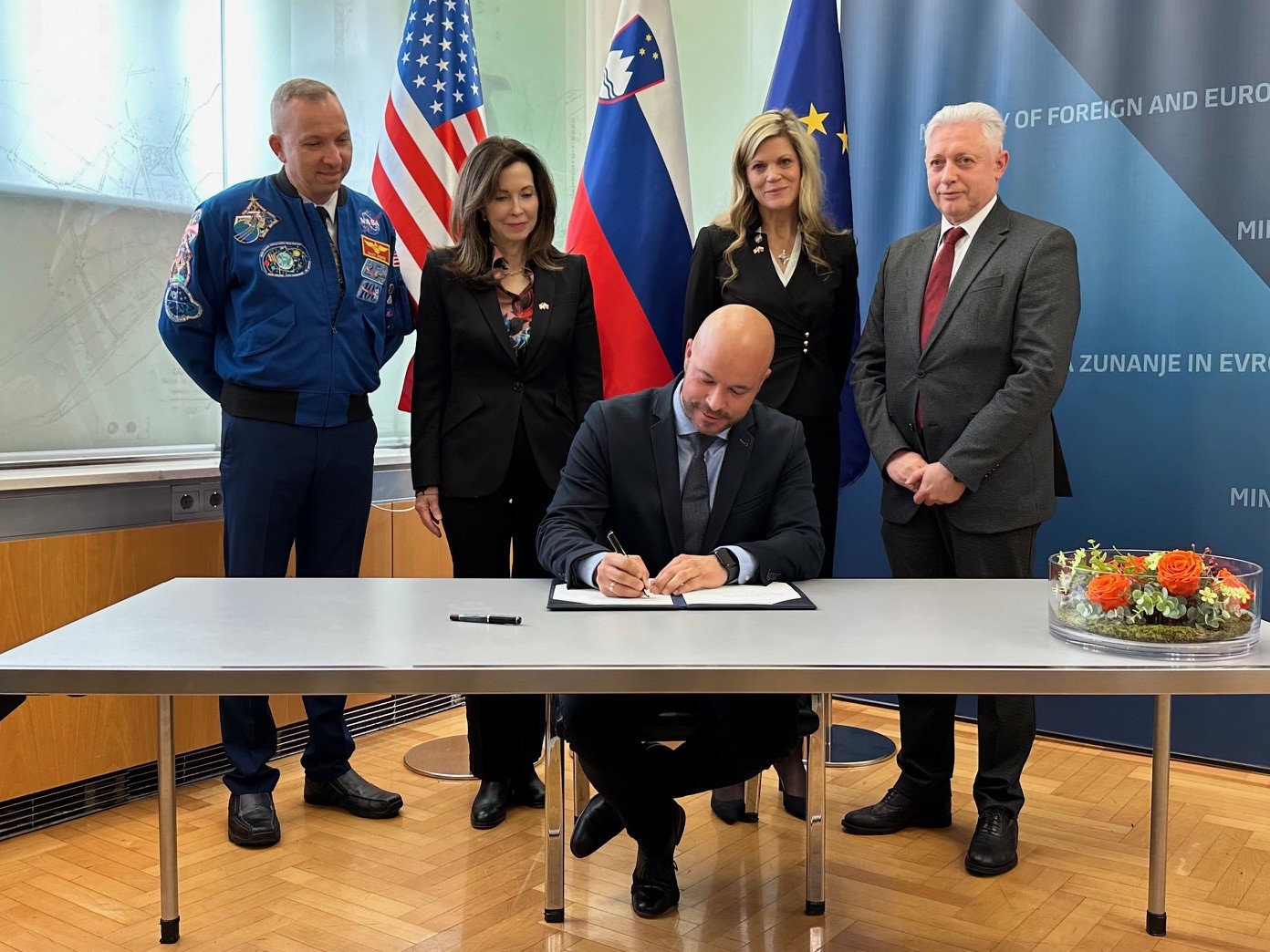SMART-1
Small Missions for Advanced Research in Technology
Type
Launch
Target
Objective
SMART-1 was the European Space Agency's first mission to the Moon. It was a technology test of new solar-electric propulsion, communication techniques and miniaturized science instruments. The technology tests were a success, and the spacecraft was deliberately crashed on the Moon in September 2006.

What was SMART-1?
SMART-1 was the European Space Agency's first mission to the Moon. It was a technology test of new solar-electric propulsion, communication techniques and miniaturized science instruments.
- SMART stands for Small Missions for Advanced Research in Technology.
- The technology tests were a success.
- The spacecraft was deliberately crashed on the Moon in September 2006.
Nation | European Space Agency (ESA) |
Objective(s) | Lunar Orbit |
Spacecraft | SMART-1 |
Spacecraft Mass | 809 pounds (367 kilograms) |
Mission Design and Management | ESA |
Launch Vehicle | Ariane 5G (no. V162) (L516) |
Launch Date and Time | Sept. 27, 2003 / 23:14:46 UT |
Launch Site | Centre Spatial Guyanais / ELA-3 |
Scientific Instruments | 1. Advanced Moon Micro-Imager Experiment (AMIE) 2. Demonstration of a Compact X-ray Spectrometer (D-CIXS) 3. X-ray Solar Monitor 4. SMART-1 Infrared Spectrometer (XSM) 5. Electric Propulsion Diagnostic Package (EPDP) 6. Spacecraft Potential, Electron and Dust Experiment (SPEDE) 7. Ka Band TT&C Experiment (KATE) |
Firsts
- SMART-1 was ESA's first mission to the Moon.
- SMART-1 made the first comprehensive inventory of key chemical elements in the lunar surface.
Key Dates
Sept. 27, 2003: Launch
Feb. 27, 2005: SMART-1 reached operational orbit
Sept. 17, 2005: Ion engine was fired for the last time
Sept. 3, 2006: Spacecraft deliberately crashed on Moon
In Depth: SMART-1
The Small Missions for Advanced Research in Technology (SMART-1), spacecraft was a technology demonstrator built by the European Space Agency (ESA) to test solar-electric propulsion and other deep space technologies on a mission to the Moon.
SMART-1 was the first European spacecraft to enter orbit around the Moon.
A second part of the mission focused on studying polar mountain peaks that are in perpetual sunlight as well as the dark areas of the lunar surface that might contain ice.
The spacecraft had a French-built Hall effect thruster (known as PPS®1350) derived from a Russian ion propulsion system originally designed by OKB Fakel, a Russian company that specializes in attitude control thrusters using ion and plasma sources. The thruster used xenon propellant to generate 88 millinewtons (mN) of thrust (about the weight of a postcard) and a specific impulse of 1,650 seconds.
The engine was powered by solar arrays which generated the 1,350 watts needed to power the ion engines.
SMART-1 was initially launched into a geostationary transfer orbit of about 4,370 × 26,240 miles (7,035 × 42,223 kilometers) by the Ariane 5 hypergolic EPS upper stage with a 5,700 pound-force (2,600 kilogram-force or kgf) thrust Aestus engine.
The spacecraft used its electric propulsion system to slowly spin to higher and higher elliptical orbits in what was a highly efficient mission profile.
Two days every week, mission controllers at the European Space Operations Centre (ESOC) in Darmstadt, Germany, repeated burns of the ion engine, gradually expanding the spacecraft’s spiral orbit.
By the time it was about 124,300 miles (200,000 kilometers) out, the Moon’s gravity began to exert a significant influence on SMART-1.
Nine days after its last perigee (Nov. 2, 2004), the spacecraft passed through the L1 Lagrange point into a region dominated by the Moon’s gravitational field.
At 17:47 UT Nov. 15, the vehicle then passed through its first perilune, having moved into a polar orbit around the Moon. Initial orbital parameters were about 4,165 × 33,000 miles (6,704 × 53,208 kilometers), with an orbital period of 129 hours.

During the following weeks, SMART-1’s ion engine fired to gradually reduce orbital parameters to allow closer views of the surface. It reached its operational orbit, with an orbital period of about five hours, by Feb. 27, 2005.
While in orbit, SMART-1’s instruments studied the Moon’s topography and surface texture and mapped the surface distribution of minerals such as pyroxenes, olivines and feldspars. It improved on data returned by NASA's Clementine spacecraft which was launched in 1994.
The SMART-1 mission was designed to end in August 2005 but was extended to August 2006 with plans for an impact.
On Sept. 17, 2005, the ion engine was fired for the last time, having exhausted all propellant. This left the spacecraft in a natural orbit determined only by lunar gravity, the gravitational influences of Earth and the Sun, and the occasional use of its attitude control thrusters.
By the time of the last firing, the spacecraft’s ion engine had fired for 4,958.3 hours, a record length of operation in space for such an engine at that time.
The mission of SMART-1 ended at 05:42:22 UT Sept. 3, 2006, when the spacecraft was deliberately crashed onto the near side of the Moon in Lacus Excellentiaie at 46.2 degrees west longitude and 34.3 degrees south latitude.
Its impact, at about 1 mile per second (2 kilometers per second), created a dust cloud visible with Earth-based telescopes.
Key Source
Siddiqi, Asif A. Beyond Earth: A Chronicle of Deep Space Exploration, 1958-2016. NASA History Program Office, 2018.








